What is battery swapping station and why is it gaining attention in the electric vehicle (EV) industry? As EV adoption grows, efficient and time-saving charging solutions are in high demand. Battery swapping stations allow drivers to replace depleted batteries with fully charged ones in minutes—no waiting, no downtime. This innovative system is especially useful for electric scooters, motorcycles, and commercial fleets operating in high-traffic or urban areas. In this article, we’ll explore the key features, benefits, cost, and future trends of battery swap stations to help you better understand their role in the evolving EV ecosystem.
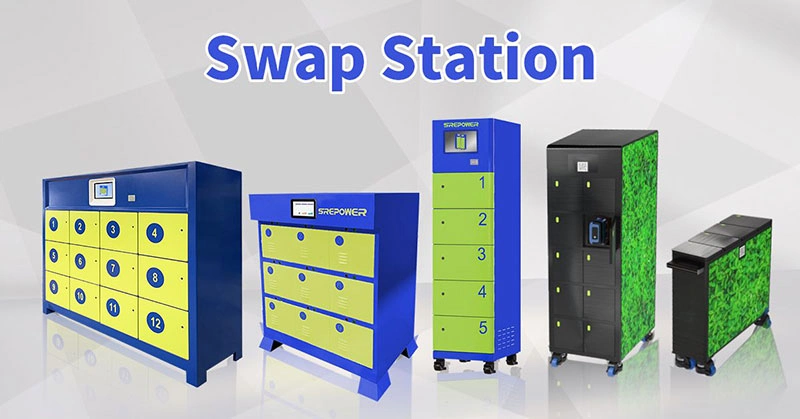
1.What Is a Battery Swapping Station?
A battery swapping station is a facility where users of electric two-wheelers, three-wheelers, or light four-wheelers can exchange depleted batteries for fully charged ones in seconds—rather than waiting for a plug-in recharge. Users authenticate via NFC card, QR code, or mobile app, open a designated cabinet, remove their discharged pack, and insert a fresh battery. The station’s smart BMS (Battery Management System) immediately verifies SoC (State of Charge) and SoH (State of Health) before releasing the battery. Meanwhile, the returned battery goes into a charging queue or undergoes diagnostics. By combining automated handling rails (or robotic arms in high-end models) with cloud-connected telemetry, swap stations eliminate “range anxiety” and drastically reduce downtime. For gig-economy riders—food delivery or ride-hailing—this can translate to handling up to three extra orders daily, since a single exchange takes under 40 seconds. In regions with unreliable grids, swap stations also serve as centralized charging hubs, often paired with solar arrays or backup generators.
With standardized compartments (4–24 slots) supporting 36V–72V packs, leading providers like SRE Power tailor solutions for diverse use cases, from compact 4-slot e-bike racks to 12-slot urban hubs with IoT monitoring, safety sensors, and remote OTA firmware updates. Ultimately, a battery swapping station marries hardware automation, intelligent BMS, and cloud software to deliver a fast, scalable, and user-friendly energy-replenishment alternative to conventional plug-in charging.
2.Main Features of a Swapping Station
Modern swapping stations integrate four core capabilities: fast automation, safety, intelligent connectivity, and modular scalability.
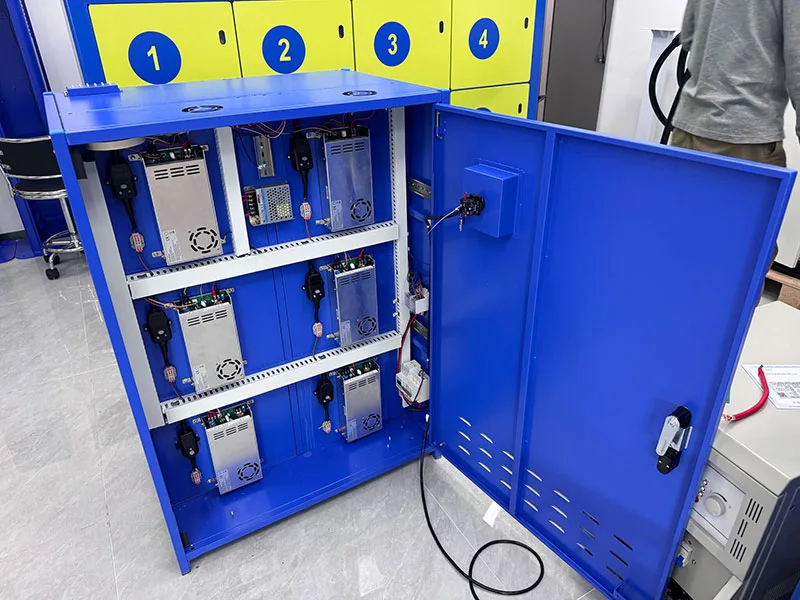
Fast Automation
• Rapid Exchange: RFID/NFC identification scans each battery in ≈3 seconds, and mechanical rails or robotic arms complete swaps in under 40 seconds total.
• Semi- or Fully Automated Handling: Entry-level models use sliding rails for user-guided insertion; advanced stations employ robotics for precise alignment of high-power connectors.
Safety & Reliability
• Multi-Sensor Protection: Each bay monitors voltage, current, temperature, and smoke. Any anomaly triggers automatic isolation to prevent over-current, over-charge, or thermal runaway.
• IP65-Rated Enclosure: Ensures dust- and water-resistance for outdoor installation, even under monsoon or dusty conditions. Integrated water-cooled fire suppression and smoke detectors further bolster safety.
Intelligent Connectivity
• Cloud Management: Swap stations continuously upload telemetry—battery SoC/SoH, swap counts, fault events—to a centralized dashboard via 4G/5G or IoT networks (MQTT/OCPP). Operators can remotely diagnose issues, push OTA firmware updates, and generate usage reports.
• User Interfaces & Billing: Supports NFC cards, QR-code scanning, and mobile-app payments. The billing engine calculates per-swap fees or subscription plans, issuing digital receipts and integrating with corporate accounts for fleet management.
Modular Scalability
• Configurable Cabinetry: Stations range from 4- to 24-slot modules, each slot accommodating 36V–72V Li-ion packs (20–100 Ah). Operators can start small and expand by adding 4- or 8-slot expansion kits without full site rework.
• Global Manufacturing Partners: Providers like SRE Power leverage factories in Dongguan (China), Malaysia, and Africa to deliver localized production. This reduces lead times, shipping costs, and import tariffs—enabling rapid deployment.
Additional considerations include local customization (cabinet colors, signage), CKD/SKD kits for on-site assembly, and battery lifecycle management—appointments for replacing degraded packs and funneling end-of-life batteries into second-life or recycling channels. In sum, swap stations combine automated hardware, comprehensive BMS, cloud-native software, and a modular architecture to deliver a safe, fast, and scalable alternative to plug-in charging—particularly suited for high-frequency, commercial EV applications.
3.Advantages of Battery Swapping
Battery swapping offers several distinct benefits over conventional plug-in charging, especially for heavy-use scenarios:
Minimal Downtime
• Ultra-Fast Exchange: Converting a battery in under 40 seconds allows gig-economy riders to remain on the road—processing up to three extra orders per day compared to DC fast-charging (20–30 minutes).
• Eliminates “Charge Queue” Anxiety: Users don’t wait in line for a charger; they simply swap and go.
Reduced Upfront Vehicle Cost
• Battery-As-A-Service (BaaS): Models allow users to purchase EVs without the battery, leasing packs separately. This lowers vehicle purchase prices by up to 20–30 percent.
• Centralized Battery Management: Operators monitor SoH and rotate batteries to maximize lifespan, postponing expensive replacements.
Optimized Energy & Grid Integration
• Off-Peak Charging: Operators recharge large battery pools during low-tariff hours (midnight–5 AM), leveling grid demand and cutting electricity costs.
• Renewable Synergy: On-site solar or micro-grids can charge packs midday, storing clean energy and discharging during peak demand—providing demand-response services to utilities.
Operational Data & Scalability
• Real-Time Analytics: IoT telemetry yields insights on cycle counts, temperature profiles, and degradation patterns—informing predictive maintenance and reducing unexpected failures.
• Modular Expansion: Starting with a 4-slot pilot, operators can add modules (4- or 8-slot) as usage grows—aligning CapEx with demand.
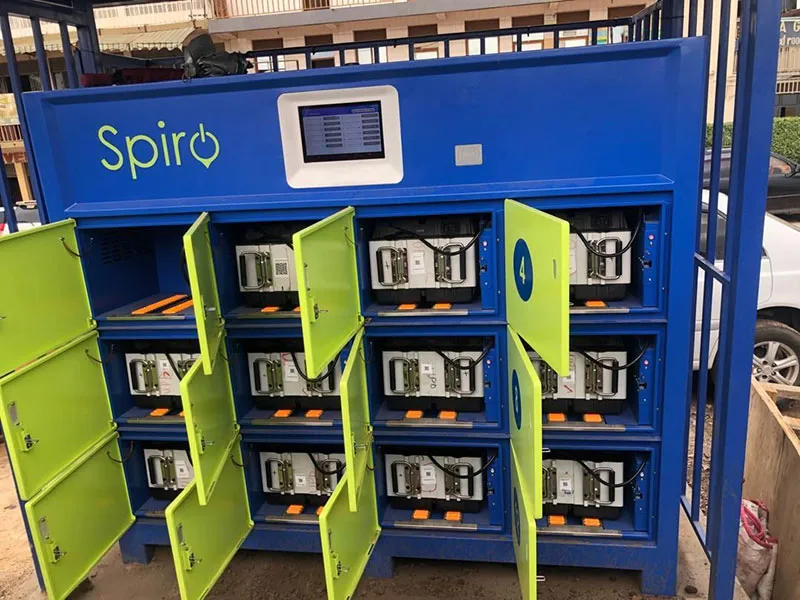
Environmental Sustainability
• Second-Life Battery Uses: Centralized inventory ensures each battery is fully utilized. Once packs degrade below thresholds, they’re repurposed as home/industrial energy storage or recycled—minimizing e-waste.
• Reduced Traffic Congestion: Faster pickups reduce queuing times at charging points, improving urban traffic flow.
Enhanced User Convenience
• No Cables to Carry or Tangle: A simple “pull-and-push” mechanism ensures foolproof mechanical connection.
• Integrated Safety Features: Stations proactively monitor for thermal or electrical faults, instantly isolating problematic packs.
Flexible Business Models
• Subscription & Pay-Per-Use: Operators can tailor plans—weekly, monthly, or per-swap—catering to part-time riders, small fleets, or large logistics companies.
• Value-Added Services: Digital platforms can upsell route optimization, driver performance metrics, or dynamic pricing during peak hours.
Addressing Infrastructure Gaps
• Grid-Independent Deployment: In areas with unreliable electricity, swap hubs centralize charging infrastructure—often paired with solar or generator backup. End-users avoid “range anxiety,” simply swapping at the nearest hub.
In summary, battery swapping transforms EV energy replenishment into a near-instant, data-driven service—boosting uptime, lowering acquisition costs, optimizing energy usage, and reducing environmental impact. With platforms like SRE Power’s Smart Swap Station—featuring 40-second exchanges, remote cloud management, and local manufacturing—operators capture significant efficiency gains, particularly in high-frequency, commercial, and emerging-market use cases.
4.How Much Does a Swap Station Cost?
The cost of a battery swap station depends on several factors, such as the number of battery compartments, charging power, automation level, and whether it includes features like remote monitoring or smart battery recognition.
Basic models with 4–6 slots typically range from $5,000 to $10,000.
Mid-sized smart cabinets (8–12 slots) usually cost $10,000 to $20,000, ideal for urban EV or e-scooter fleets.
High-capacity stations with 15+ slots and integrated software, solar panels, or cooling systems can cost $25,000 to $50,000 or more.
Customization, local grid compatibility, and battery type (lithium vs LFP) also influence pricing. Labor, shipping, and installation costs are additional. To get the best value, it’s important to work directly with a reliable manufacturer like SRE Power, who can offer tailored solutions and long-term support based on your specific application.
5.SRE Swap Station Product
SRE Power provides a spectrum of Smart Swap Station models—designed for varying throughput demands, battery types, and deployment contexts. Each unit integrates IoT-enabled BMS, safety sensors, and cloud connectivity. Below is a concise overview:

5-Cabinet 15.8 kW Smart Swap Station
Compartments: 5 slots for 36 V–72 V Li-ion packs (27–100 Ah).
Peak Power: 15.8 kW, enabling simultaneous trickle charging of docked batteries.
Automation: Manual sliding rails; RFID/NFC scanning (<3 s).
Connectivity: 4G IoT module, MQTT/OCPP protocols, remote OTA updates.
Use Case: Small pilot sites, rural micro-hubs, or low-volume fleets.
8-Cabinet 10 kW Battery Exchange Station
Compartments: 8 slots for 48 V–60 V packs (30–80 Ah).
Power Rating: 10 kW for steady recharging cycles.
Automation: Semi-automated rails with alignment sensors; QR and NFC authentication.
Features: Optional solar PV integration with MPPT controllers.
Use Case: Mid-density urban fleets, food-delivery hubs.
10-Cabinet 16.8 kW Swap Charging Station
Compartments: 10 slots, suited for heavy urban usage.
Peak Power: 16.8 kW, reducing queue times.
Automation: Robotic arms for precise docking; touchscreen UI.
Safety: IP65 enclosure, over-current/short-circuit protection, smoke/temperature sensors.
Use Case: High-throughput locations—metro stations, bus terminals, logistics parks.
12-Cabinet 15.8 kW Battery Swap Station (SRE12LF-SS0880ML4AL)
Compartments: 12 slots, compatible with multi-chemistry packs (48 V–72 V).
Input Data: AC 150–270 V, 115 A max.
User Interface: App-based map, wallet integration, subscription management.
Safety Suite: IP65, water-cooled fire suppression, real-time fault alerts (SMS/email).
Use Case: Large urban deployments—shopping malls, commercial districts, campus hubs.
4-Cabinet Station for E-Bikes & Scooters
Compartments: 4 compact slots for 36 V–48 V, 20–30 Ah packs.
Power: 2 kW per slot.
Portability: Footprint L 600 mm × W 446 mm × H 1420 mm—ideal for indoor or storefront installs.
Connectivity: Wi-Fi or 4G; lightweight cloud portal.
Use Case: Last-mile e-bike rentals, community shared-bike services.
12-Cabinet Charging Rack Smart Swap Station (Expansion Kit)
Function: Add-on module to augment existing 4- or 8-slot base stations.
Installation: Plug-and-play power/data bus, intelligent load-balancing to prevent overload.
Scalability: Start with a single 4-slot unit; expand to 12 or more slots as demand rises.
6.Difference Between Swap Stations and Charging Stations
Though both “swap” and “charge” stations restore energy to EVs, they vary across process flow, infrastructure, user experience, and economics:
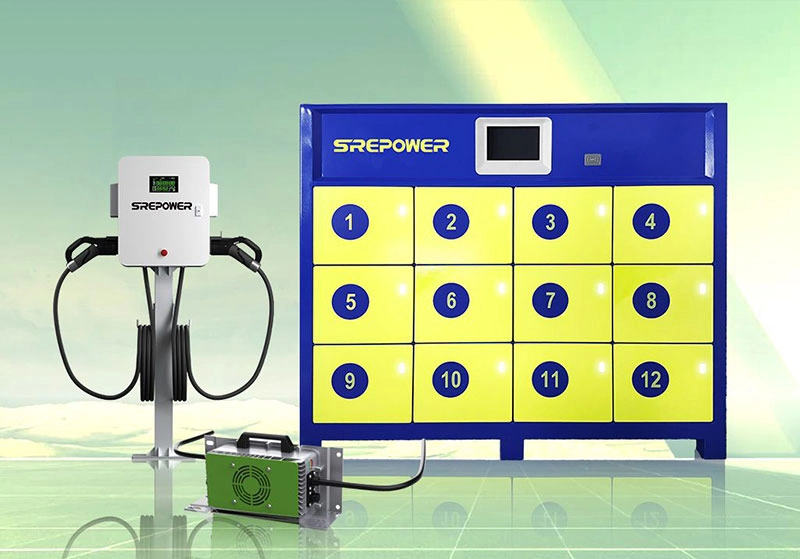
Process Flow & User Experience
Swap Station:
• Authenticate (NFC/QR/App) → Open compartment → Remove depleted pack → Insert fresh battery → Close door → Depart.
• Total Time: 10–40 seconds.
Charging Station:
• Park EV → Plug in connector (AC or DC) → Authenticate (RFID/App) → Wait for battery to charge (20–60+ minutes) → Unplug → Depart.
• Total Time: 20–60+ minutes, depending on charger power and battery size.
Infrastructure & Footprint
Swap Station:
• Modular cabinets (4–24 slots), battery handling rails or robotics.
• On-site battery charging room or BESS for recharging swapped packs.
• Grid Connection: Moderate local draw; bulk charging scheduled off-peak.
• Footprint: Larger area needed for cabinets—often 10–30 m².
Charging Station:
• Charger pedestals (AC: 3–7 kW; DC: 50–350 kW), high-current cables, and cooling loops for ≥150 kW.
• Grid Connection: High-capacity feeder required for multiple fast chargers.
• Footprint: Smaller per port (2–3 m² each), but turning radius for cars adds space.
Operational Model & Utilization
Swap Station:
• Central battery inventory—batteries are charged off-peak in bulk.
• High throughput (100-300 swaps/day) with each user occupying station <1 minute.
• Revenue models: Per-swap fees, subscription plans, BaaS leasing, and data services.
Charging Station:
• Each vehicle occupies port for entire session—peak utilization ~50–70 percent.
• Energy sold per kWh; no separate battery asset.
• Queueing: Possible congestion during peak travel or commuting hours.
Capital & Operational Costs
Swap Station:
• CapEx: Cabinet hardware USD 8,000–USD 40,000+; battery inventory USD 150–USD 250 per pack; site prep & power USD 5,000–USD 15,000.
• OpEx: Electricity (USD 0.08/kWh), cloud platform (USD 100–USD 300/month), maintenance (USD 1,000–USD 2,000/year).
• ROI: 2–3 years in high-frequency contexts (delivery, ride-hailing).
Charging Station:
• CapEx: AC charger USD 1,000–USD 3,000; DC fast charger USD 30,000–USD 100,000.
• OpEx: High demand charges, utility tariffs, maintenance of power electronics.
• ROI: 4–7 years in moderate-volume settings.
Use Cases & Suitability
Swap Station:
• High-frequency riders (food delivery, e-rental, taxi fleets).
• Emerging markets with unreliable grids—centralized charging hubs mitigate “range anxiety.”
• Two-wheelers and three-wheelers: smaller packs (36V–72V, 20–45 Ah) are easier to handle and standardize.
Charging Station:
• Passenger cars and long-range EVs requiring large-format fast chargers.
• Residential and workplace charging—overnight AC charging acceptable.
• Trucks and buses: depot charging or opportunistic DC charging along routes.
Environmental & Grid Impacts
Swap Station:
• Centralized battery charging can leverage off-peak or renewable energy, reducing grid peaks.
• End-of-life packs enter second-life storage or recycling, minimizing waste.
Charging Station:
• High-power DC draws can stress local distribution transformers—requiring infrastructure upgrades.
• Direct charging may not absorb excess solar generation efficiently.
7.How to Choose a Swap Station Manufacturer
Selecting the right battery swapping station manufacturer is pivotal for long-term operational efficiency, safety, and ROI. Below is a streamlined framework to guide your decision:
Technical Expertise & Innovation
R&D Capabilities: Choose vendors with a dedicated team (30 + engineers) focused on hardware, BMS, and cloud software. SRE Power employs 50 + engineers innovating in RFID, IoT management, and firmware.
Standard vs. Custom Designs: Ensure the manufacturer offers off-the-shelf models that suit local battery voltages (36V–72V) and climate conditions, while also providing customization—cabinet aesthetics, UI language, or voltage conversion.
Product Portfolio & Scalability
Range of Options: Leading vendors provide cabinets in 4, 8, 10, 12, and 24-slot configurations. Confirm each model’s throughput capabilities align with your demand projections.
Modular Expansion: Opt for providers whose stations allow seamless addition of expansion modules (e.g., adding 4- or 8-slot kits), enabling incremental scaling without full system replacement.
Manufacturing & Supply Chain
Local vs. Central Facilities: Prefer manufacturers with regional factories to reduce lead times and shipping costs. SRE Power operates plants in Dongguan (China), Malaysia, and Africa—enabling local CKD/SKD assembly and lower import duties.
Quality Control & Certifications: Verify that factories hold ISO 9001:2015, CE, and IP65 certifications. Request Factory Acceptance Test (FAT) reports for key components—cabinets, BMS, and IoT modules.
Safety & Reliability
Redundant Protection: Ensure each cabinet has multi-sensor fault detection (over-current, over-temperature, smoke) and automatic isolation. SRE’s SRE16LF-SS0880ML4AL, for example, includes water-cooled fire suppression and real-time alarms (SMS/email).
Warranty & SLAs: Seek at least a 12-month hardware warranty, plus clear SLAs (e.g., 4-hour support response, 24-hour critical-parts replacement). Confirm presence of local spare-parts depots and certified technicians.
Software & Digital Platform
Cloud Dashboard: Look for intuitive dashboards that display real-time battery health, swap transactions, and stack-level analytics. Ease of navigation and multilingual support are critical.
API & Integration: Choose vendors offering open RESTful APIs for integration with fleet-management, payment gateways, and rider apps. This enables features like real-time station availability, route recommendations, and dynamic pricing.
Local Support & After-Sales Service
Regional Footprint: A manufacturer with local offices or authorized service centers ensures rapid downtime resolution. Check if they conduct periodic maintenance camps.
Training & Knowledge Transfer: Confirm availability of comprehensive training—covering BMS diagnostics, firmware upgrades, and emergency procedures. SRE often conducts hands-on workshops with local partners.
Total Cost of Ownership (TCO) & Financing
CapEx vs. OpEx Analysis: Compare bundled quotes—hardware, installation, site prep, one-year cloud subscription—against projected revenue from swap fees, subscriptions, or BaaS leasing.
Battery Leasing Options: Manufacturers offering BaaS shift battery-ownership risks (degradation, recycling) to the vendor, reducing initial CapEx by 20–30 percent.
Government Incentives: Ensure the vendor has experience deploying under local EV schemes (e.g., FAME II in India) to aid in grant applications and compliance.
Proven Case Studies & References
Relevant Deployments: Review case studies aligned with your use-case—urban delivery, e-rental, or campus mobility. SRE’s partnership with Spiro in Africa shows rappID adoption: riders saved up to 2 hours/day, increasing throughput by 25 percent.
Customer Testimonials: Speak to existing clients about uptime, maintenance responsiveness, and BMS accuracy—uncovering practical insights on local variables (e.g., monsoon resilience, grid fluctuations).
Future-Proofing & R&D Collaboration
Upgradability: Confirm that platforms can support future enhancements—5G connectivity, solid-state battery compatibility, or expanded AI-driven analytics. SRE’s modular hardware can accept new IoT boards or additional slots without full replacement.
Co-Innovation Opportunities: For large deployments, explore co-development—tailoring BMS algorithms to local temperature profiles or collaborating on next-gen connectors. Vendors with open R&D partnerships ensure a long-term roadmap aligned with your needs.
8.Future Trends in Battery Swapping
Battery swapping is rapidly evolving, driven by standardization efforts, renewable integration, advanced automation, and data-centric operations. Below are the key trends shaping the swapping ecosystem over the next 3–5 years:
Standardization & Interoperability
Unified Pack Protocols: Industry consortia (e.g., India’s BIS, China’s GB/T) are converging on standard voltages (48 V, 60 V, 72 V) and communication protocols (CAN/RS485). This shift enables cross-brand battery compatibility, reducing inventory complexity and broadening station accessibility.
Open API Networks: Swap operators will adopt open data standards (OCPP 2.0.1, MQTT) to allow roaming—riders can swap at any networked hub, akin to telecom roaming. This interoperability fosters larger swap-station clusters and unlocks economies of scale.

Renewable Energy & Grid Services
Distributed Energy Storage Nodes: Swap stations, with on-site BESS, will absorb midday solar generation and discharge during peak demand—supporting grid stability and earning ancillary-service revenues.
Bidirectional V2G/V2H Integration: Future swap hubs will incorporate inverters to enable Vehicle-to-Grid (V2G) and Vehicle-to-Home (V2H) capabilities. Idle batteries can discharge back into local micro-grids during outages or high-tariff periods, creating new revenue streams.
Enhanced Automation & Robotics
Fully Robotic Exchange: Next-gen stations will deploy articulated robotic arms, vision systems, and AI algorithms for precise, sub-20-second battery swaps—eliminating residual manual handling.
Autonomous Logistics: Large-scale hubs may utilize AGVs (Automated Guided Vehicles) to move battery packs between charging docks and cabinet slots—streamlining workflows and reducing human intervention.
Higher-Density, Super-Modular Stations
Large-Scale Urban Hubs: In megacities, 48- or 96-slot facilities will emerge, featuring multi-aisle layouts and intelligent queue management—guiding riders via mobile apps to the nearest available slot, optimizing traffic flow.
Solid-State Battery Handling: As solid-state chemistries commercialize (~2027–2028), swap stations will adapt to handle high-energy-density modules (e.g., 80 Ah packs), necessitating redesigned compartments and upgraded BMS.
Data-Driven & Predictive Operations
Machine Learning (ML) Insights: Operators will use large datasets (battery cycles, temperature profiles, load curves) to train ML models that predict battery degradation, optimize charging schedules, and forecast demand surges—minimizing downtime.
Real-Time Fleet Management: Advanced dashboards will integrate station performance, rider metrics, and route analytics—empowering fleet managers to deploy vehicles dynamically, reducing idle time by 10–20 percent.
Policy & Regulatory Evolution
Mandatory Swap-Station Access Plans: Several governments (e.g., Delhi, Maharashtra) may require new ride-hailing or e-taxi licenses to include swap-station deployment strategies—accelerating network growth.
Carbon Credit & ESG Incentives: Swap networks integrating renewables and grid services could qualify for carbon credits or ESG subsidies, improving financial returns and bolstering green credentials.
Strategic Partnerships & Ecosystem Building
OEM & Aggregator Collaborations: Automakers will co-brand batteries and share SoH data, while delivery platforms integrate swap station locations into rider apps—streamlining rider workflows and guaranteeing battery warranty compliance.
Multi-Modal Mobility Hubs: Swap stations co-located with metro stations, bus depots, and parking garages will form integrated “mobility hubs,” facilitating seamless transfers between e-bikes, e-ricks, and public transit.
Business Model Innovations
Dynamic Pricing & Micro-Subscriptions: Operators will offer flexible pricing—e.g., pay-per-minute hold fees to deter users from occupying slots too long, micro-subscriptions for occasional riders, or “swap credit” bonds for corporate contracts.
Co-Operative Ownership Models: Local municipalities or residential associations may co-invest in community swap stations—pooling resources to serve localized micro-grids and sharing revenue among stakeholders.
Enhanced User Experience & Value-Added Services
Hyper-Localized Station Placement: AI-driven geospatial analytics will pinpoint optimal “micropod” locations—under staircases, roadside kiosks, or converted shipping containers—ensuring riders never stray more than 100 m for a swap.
9.SRE Swap Station Case Studies
1. Nairobi, Kenya: Boda Boda Electrification
• Challenge: Nairobi’s motorcycle taxi (“boda boda”) sector needed a reliable EV solution amid frequent grid outages.
• Solution: SRE partnered with Spiro to deploy three 12-cabinet 15.8 kW Smart Swap Stations, each co-located with a solar micro-grid and 20 kWh BESS.
• Outcome:
– 90 percent rider adoption within two months.
– Riders saved 2 hours/day previously spent charging—boosting daily trips by 25 percent.
– Monthly reduction of 1,200 L gasoline → ~3 tCO₂ avoided.
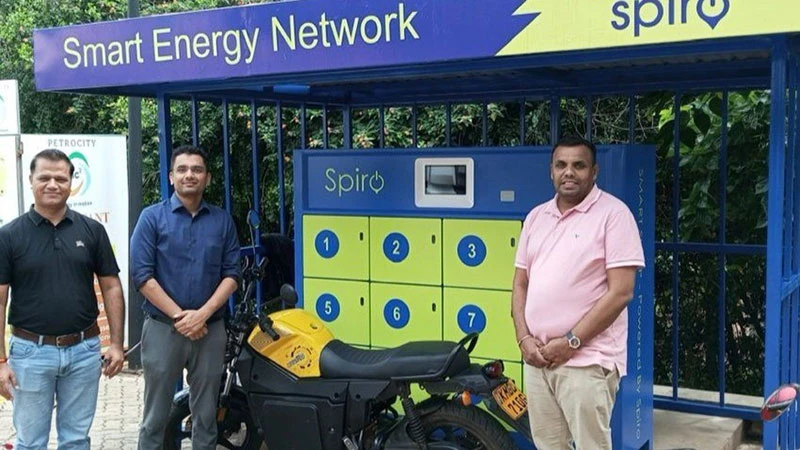
2. Mumbai, India: Food Delivery Optimization
• Challenge: Delivery riders faced 20–30 minute charging breaks during peak hours.
• Solution: Two 8-cabinet 10 kW Swap Stations integrated with a major food-delivery aggregator’s rider app for real-time availability.
• Outcome:
– Order throughput up 20 percent during dinner peak.
– 93 percent of surveyed riders preferred swapping vs. fast charging.
– Aggregators saw 15 percent cut in battery repair costs via predictive BMS alerts.
3. Jakarta, Indonesia: Suburban Community Hub
• Challenge: Limited last-mile options and unstable grid in Jakarta’s outer districts.
• Solution: A 12-cabinet hybrid swap station paired with a 50 kWh solar + BESS installation—serving 500 households on subscription.
• Outcome:
– 60 percent daily charging via solar, cutting electricity costs by 35 percent.
– 80 percent reduction in “station empty” support calls due to real-time occupancy notifications.
– Residents reported greater travel confidence and reduced range anxiety.







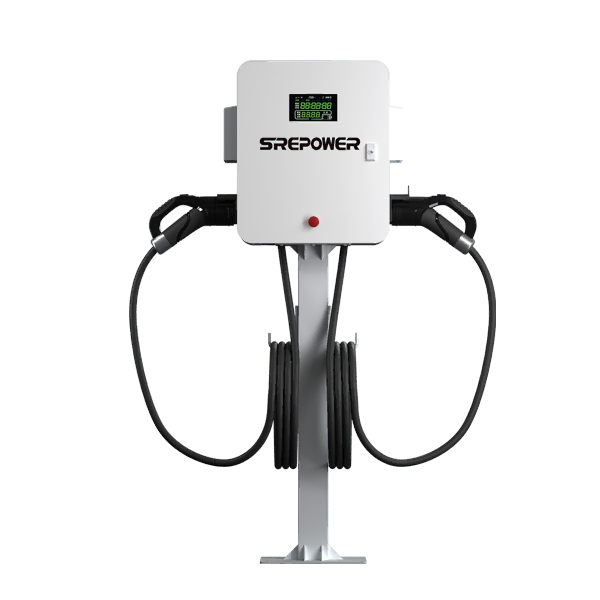
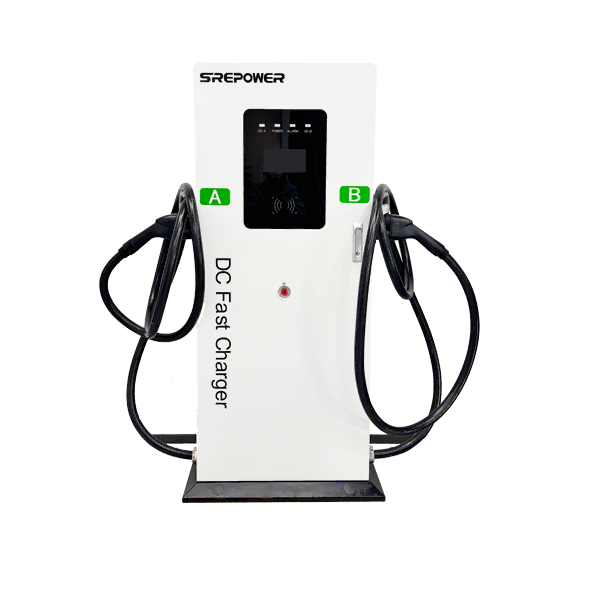

 WhatsApp Contact
WhatsApp Contact